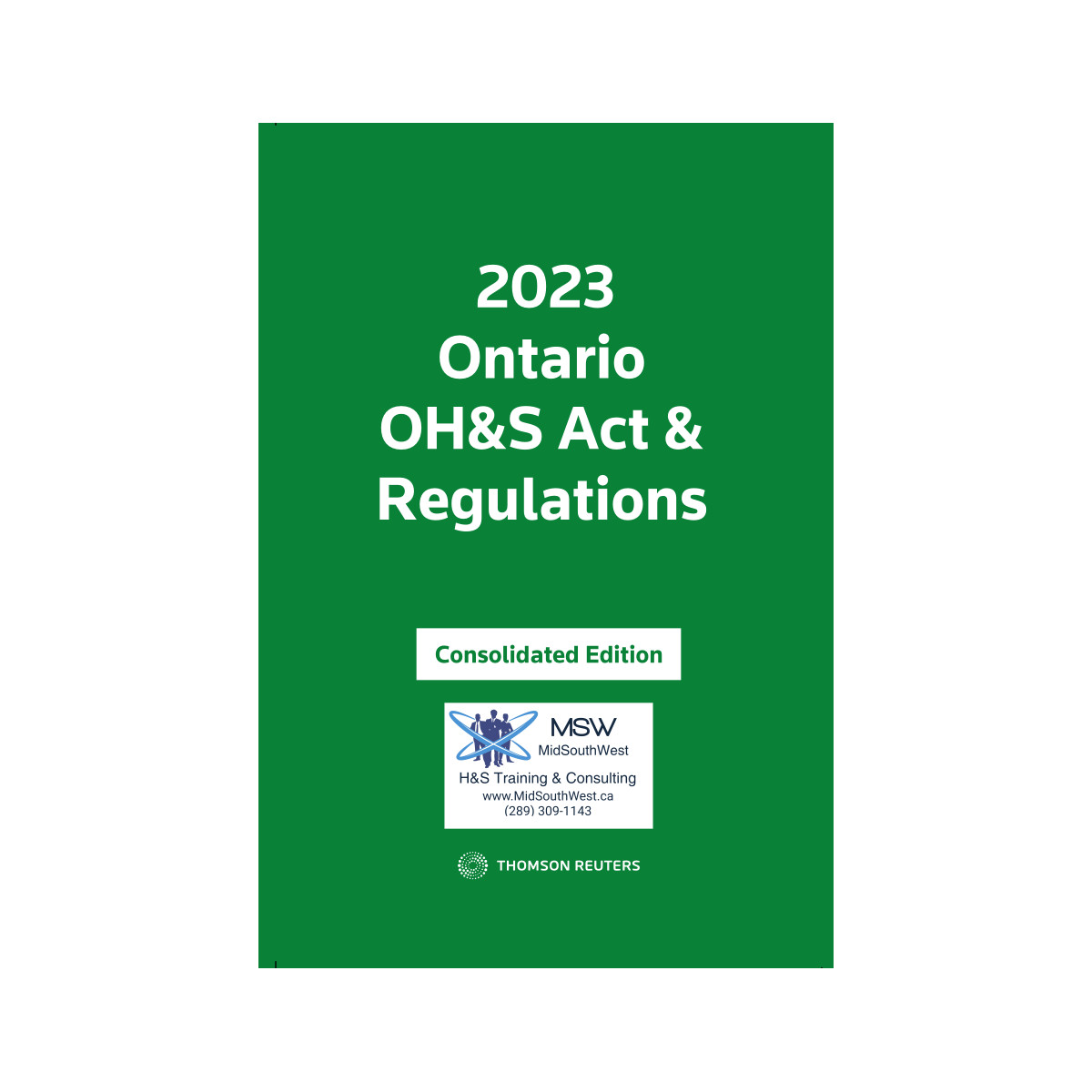Smoking cessation programs have positive impacts for both employers and workers
December 13, 2021
|
Did you know that your employees that smoke could be costing you $3,077 dollars per year in lost productivity due to excessive smoke breaks? Not to mention the increase in your benefit program premiums due to the ill health effects of cigarette smoking.
With the New Year upon us, consider helping employees commit to quitting in 2022 by sponsoring a workplace smoking cessation program. Not only will your workers enjoy the freedom and health of a smoke-free lifestyle, but employers will also reap the benefits including cheaper benefits premiums, increased productivity, and less lost time due to smoking-related illnesses. |
 |
In 2022, resolve to be prepared for anything
November 29, 2021
|
Wow, what a year! 2021 went by so fast, it’s hard to imagine it’s already that time again when we set organizational safety resolutions aimed at helping us be the best we can be in the coming year. At MidSouthWest Safety Training and Consulting, we believe that setting safety resolutions sets the tone for the entire year. Why set safety resolutions?
|
 |
Understanding Harassment in the Modern Remote Work Landscape
November 15, 2021
|
For some, the term workplace harassment might conjure images of bad behaviour at the workplace. This could include mean-spirited pranks, bullying or intimidating a colleague, or even sexual misconduct. Regardless, workplace harassment is usually envisioned as something that happens at work. That is, in the physical workplace.
What does that mean for remote workers? Does it mean that they’re spared from workplace harassment? After all, they work at home! There’s no one around to give them a hard time, bully them, or treat them in otherwise harassing or inappropriate ways. Right? Wrong. Workplace harassment in today’s digital era is a real threat to employee wellbeing and organizational safety. |
 |
Is there a pattern in your workplace safety incidents?
November 2, 2021
|
Trending safety issues are the issues, problems, or concerns that keep coming up over and over. When an issue arises once and is swiftly and effectively resolved, it’s not a trend. But when the same things happen more than once, patterns start to form, and these become trending safety issues in the workplace. These issues may be minor, such as JHSC members consistently identifying the same housekeeping concerns month to month, or major such as more than one staff being seriously injured during the same work process.
The Joint Health and Safety Committee (JHSC) is a key player in documenting and identifying safety trends in the workplace. They are also responsible for making recommendations to ensure that safety issues are controlled, and trending issues are addressed. |
 |
Managing Hazards Part 1: Health Hazards
October 18, 2021
|
Hazards are generally sorted into two broad categories:
Health hazards contribute to occupational illness and disease. They’re pervasive because they’re not clearly defined, sometimes unnoticeable, and workers may ignore warning signs or symptoms that are indicative of the presence of a potential health hazard.
The effects of health hazards are not always immediate, sometimes taking months or even years to appear. As well, it is often the case that illnesses resulting from health hazards are irreversible. The five health hazard categories are:
|
 |
Managing Workplace Stressors
October 12, 2021
|
Stress is part of life. Whether you’re working remotely or you’re back in the office, you’re bound to experience stress at work. Stress can be dangerous when it is excessive. Learning to manage work-related stress is a key component in your mental well-being.
Normal Stress To a certain extent, experiencing stress is considered normal. It’s part of daily life, and it serves various functions, some of which are beneficial. For example, a small amount of stress may help you meet deadlines, perform to expectations, or arrive for time to an appointment or event. Some stress is necessary for survival because it allows human beings to access flight or fight instincts and spontaneous decision-making skills, especially when faced with challenging or dangerous situations. Dangerous Stress Stress becomes dangerous when it’s prolonged, exceeds normal levels, or both. When stress is both overwhelming and ongoing, it is chronic. |
 |
Talking to workers is an integral part of the workplace inspection
September 28, 2021
|
Workplace inspections are a primary function of the Joint Health and Safety Committee (JHSC). Under the Occupational Health and Safety Act, s.9(23), the JHSC must designate a worker member to inspect the workplace. Under s 9(24), the worker member should be JHSC certified, if possible.
The purpose of the monthly inspection is to identify hazards and monitor current work practices to ensure the safety of all workers. Workplace inspections determine:
There are three major components of workplace inspections. They are:
To conduct workplace inspections in an efficient and well-organized manner, use a standardized inspection checklist to keep you on track and prevent forgetting or overlooking anything important. |
 |
There are many activities that organizations might consider implementing to increase workplace wellness
September 9, 2021
|
Canadian employers are starting to recognize the value of human capital. The theory goes, “If we look after them, they’ll look after us.” It means that employers who invest in worker wellness are seeing returns in the form of:
|
 |
How upper management can motivate workers to embrace the workplace safety culture
August 19, 2021
|
If your organization’s safety culture isn’t where it needs to be, it can be changed or strengthened, but that change must start at the top. For an organization to successfully implement and foster a culture of safety, managers, CEOs, and owners must all buy-in to the culture of workplace safety.
What is Safety Culture?Safety culture is a broad concept that is usually taken to reflect the qualities of the organizational culture that affect safety attitudes and behaviours. Simply put, it’s the “way things are done.” When the safety culture is strong, the people within the organization view safety as both an individual responsibility and an integral part of operations. Safety culture is also attitudes toward safety. These are developed through the support of top management, and leadership through the examples set by supervisors, managers, and even the CEO. Top management who practice what they preach will have an easier time developing a safety culture within all organizational practices.
|
 |
Workspace ergonomics matters at home and in the office
August 5, 2021
|
Many of us in the office industry sit at work. A lot. While some may sit for a few hours, most of us sit all day. There are numerous health risks associated with periods of prolonged sitting.
Adverse Health Effects Sitting all day can lead to several very serious health issues. Sitting is inactive, so the body doesn’t burn as many calories when it’s sedentary all day. This can lead to weight gain and obesity, which is linked to diabetes, heart disease, cancer, and a myriad of other health conditions. Ergonomic Injury Sitting all day can result in serious ergonomic injuries if you’re not practicing ergonomic safety. Workers who sit all day are especially prone to back and next strains and injuries, carpal tunnel syndrome, and other musculoskeletal disorders that all stem from improper seated working postures, repetition, prolonged sitting, and not having the proper equipment or an ergonomically correct workstation. |
 |
Do you know the hierarchy of hazard controls when working at heights?
July 19, 2021
|
Working from heights is hazardous. However, with the right controls in place, work from heights can be completed safely, efficiently, and correctly. Fall arrest harnesses reduce injury and fatality, but they’re the least effective hazard control.
In this article we'll review: |
 |
Can you spot the signs of heat exhaustion and heat stroke?
July 5, 2021
|
Canadian summers can be very hot. They’re also typically, humid, which can exacerbate the heat and drive the mercury up even higher. But the warmth of the summer sun can go from fun to dangerous very quickly, especially for those who work outdoors or inside in un-air-conditioned environments, such as:
For those who work in extremely hot temperatures, the summer season is a time of heightened awareness, because working in extremely hot environments or under direct sunlight can be hazardous. Risks include heat exhaustion, heatstroke, and sunburn. In this article, we discuss: |
 |
Are open office plans extinct?
June 14, 2021
|
Pre-COVID, open office plans were trendy. In fact, they were so desirable and cutting edge that many job postings listed open-office seating as a benefit to employment. Supporters of open office plans boasted their stylish, modern aesthetic and their propensity to fuel collaboration and team building. It was clear: open office plans were the future.
That was, until COVID-19 changed everything about the way we do business. All of the sudden, open offices represented danger, uncleanliness, and the potential for spread. In the wake of COVID-19, is the open office plan extinct? |
 |
Our Partners in Health and SafetyJune 3, 2021
MidSouthWest is proud to support local businesses that share our goal of improving workplace health and safety through our Partners of MSW program. This month, we'd like to introduce you to Vision Signs & Promos, a full-service sign & banner printing company locate.
There are many different options when it comes to creating a safety sign. Vision Signs & Promos can help you with design, formatting and printing a safety sign that suits the needs of your particular purpose. Visit our Partners of MSW page to learn more about the Vision Signs & Promos! |
Get the most of out a slow summer by investing in employee health and safety training
May 26, 2021
|
For most organizations, summer represents a slower time. Many workers take vacation, production and orders slow, and in some industries, the heat forces reduced hours. Many employers do not think about training during the summer months. However, there are many benefits to completing health and safety training in the summer!
|
 |
Employers Responsibilities Related to Medicinal Cannabis
May 19, 2021
|
On October 17th, 2018, recreational cannabis became legal across Canada. However, medicinal cannabis has been approved for use in Canada since 2001. It is important to differentiate between recreational and medicinal cannabis use:
|
It is mandatory to inspect all workplace equipment prior to use
April 26, 2021
|
While it may seem redundant, pre-use inspections are an integral component of proving due diligence in the workplace. As well, pre-use inspections are proactive. They can help identify potential deficiencies or failures in equipment before an accident or injury occurs.
Pre-Use Inspections Pre-use inspections refer to the specific and frequent inspection of equipment such as lift trucks, cranes, mobile work platforms, presses, hand tools, ladders, etc. Complete pre-use inspections daily, or more often if there are multiple shifts in a day. Pre-use inspections do not take the place of other mandatory inspections. |
Separating Home from Work when you Work from Home
April 14, 2021
|
The COVID-19 pandemic has had lasting and drastic impacts on how people work. Organizations have had to pivot faster than ever before and continue to adapt to new and evolving safety measures and government guidelines. Mandates to work from home if possible are a notable change, and one that will likely continue as the pandemic eases.
|
 |
Distance learning, online training and virtual classroom training options now and in the future
March 31, 2021
|
The COVID-19 pandemic has driven many drastic societal changes over a very short time. One of those major changes is to the way people access education. In the wake of the COVID-19 pandemic, online training isn’t just an alternative – it’s the future.
Read more about the benefits of online training |
 |
What is Competency in the workplace?
March 18, 2021
|
General competence is important in the workplace. Competence is defined as:
“having adequate or requisite abilities or qualities.” That definition applies to workplace safety in a general sense. Many workers define themselves as competent, meaning they feel able to do their jobs well and meet expectations. And yet, even the most competent workers may not be considered competent as outlined in the Occupational Health and Safety Act (the Act). Consider the following example. A worker who is very good at their job operating a press has been asked to cover a shift in the warehouse and operate a lift truck. Although the worker feels very confident and competent, they cannot operate the lift truck because they are not considered to be competent under the Act. When it comes to equipment operations, competency is key! |
 |
Best practices to ensure safety of new employees in the workplace
March 4, 2021
|
Did you know that new employees are three times as likely to sustain a lost-time injury than seasoned workers? Almost half of all lost-time injuries among new hires happen within the first three months of training. Why is that?
|
 |
Comparing a Health and Safety Program Review and a Gap Audit
February 17, 2021
|
Completing a gap audit is a very effective and proactive approach to safety in the workplace. The whole concept of a gap audit is to identify and correct deficiencies before an accident or injury takes place. Additionally, gap audits ensure that your entire safety program is compliant with the ever-changing and always expanding health and legislation in your jurisdiction and industry.
Unfortunately, gap audits are underutilized, usually because employers don’t understand the benefits, or how gap audits differ from regular health and safety program reviews. |
 |
The MLTSD Arrived. Now What? A Guide for the JHSC
February 9, 2021
|
The thought of a surprise visit from the Ministry of Labour, Training, and Skills Development (MLTSD) is usually fraught with anxiety. But, since the MLTSD and the Joint Health and Safety Committee (JHSC) share a common goal, a visit from the MLTSD shouldn’t be a source of concern.
One of the ways that the MLTSD helps organizations work toward safety objectives is to perform both scheduled and unscheduled inspections. Unscheduled inspections, known as blitzes, are part of the MLTSD’s ongoing workplace compliance initiatives, and they’re usually aimed at specific sectors, industries, or practices. In this article, we cover: |
 |
Understanding hazards and safety protocols for lift trucks in warehouses and manufacturing plants
January 22, 2021
|
Lift truck design hasn’t changed much over the years. It’s likely because the design, while quite simple, is effective and efficient. When operated properly, lift trucks are also very safe.
Lift Truck Hazards in the Workplace Lift trucks are most popular in manufacturing plants and warehouses; however, their use is not limited to these industries. Lift trucks are used to lift, move, and place, heavy loads and products on skids. Like any workplace process or equipment, there will always be hazards associated with the lift truck use. Some hazards include:
|
 |
Understanding electrical safety in the workplace
January 5, 2021
|
Electrical hazards present a very serious risk to the life and health of those who work around electricity. In fact, one in every five critical injuries involving electricity results in a fatality. It doesn’t take much electricity to cause injury: less than one amp can result in stopped breathing and contact with only 15 amps may result in death.
|
 |
Have you ever considered making a New Year's Resolution for your organization?
December 1, 2020
|
It’s that time of year again when we set resolutions aimed at helping us be the best we can be in the coming year. The idea of resolutions may bring to mind personal goals such as dropping a bad habit or learning something new. But have you ever considered making resolutions for your organization?
At MidSouthWest Safety and Consulting, we believe that setting safety resolutions sets the tone for the entire year. Not sure where to start? We’ve listed some safety resolutions for 2021 below. |
 |
How the Efficient JHSC uses Conflict Strategically
November 23, 2020
|
Many view conflicts as negative, and unproductive. However, when used strategically, conflict can be very useful and productive. When it comes to the Joint Health and Safety Committee (JHSC), some conflict is even considered healthy!
What is Conflict? Conflict is defined as a serious disagreement or argument. Generally speaking, conflict is considered to be unproductive because it’s focused on a person, rather than an issue, idea, or value. Unproductive conflict just goes in circles, produces no resolutions, is repetitive, and ends up resulting in personal attacks. In contrast, when the focus on conflict is shifted from people to ideas, values, or specific issues, conflict can be very productive. Why? Because productive conflict, when focused on ideas, values, and issues, represents an open exchange of ideas. Everyone can present differing viewpoints and opinions. Working together, the JHSC can come to an agreement that satisfies everyone. |
 |






